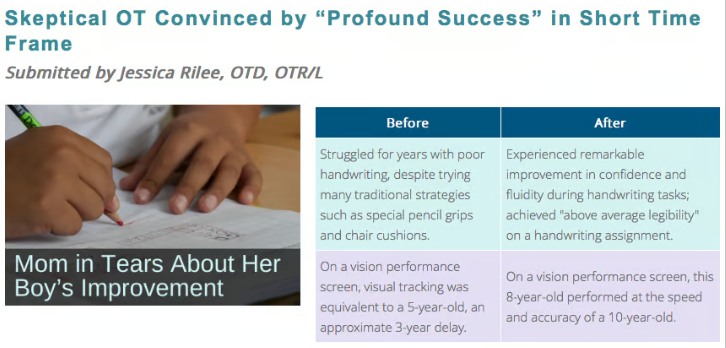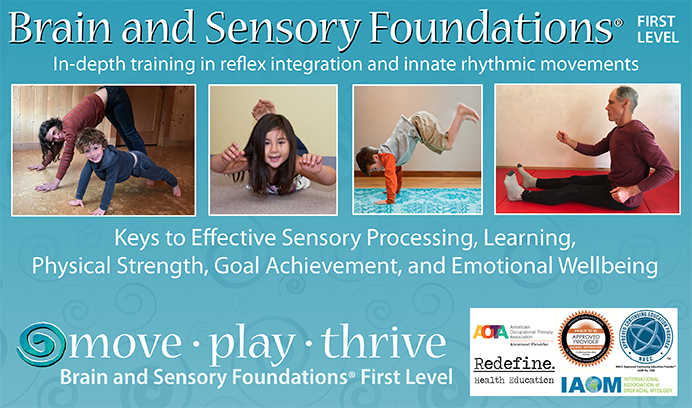Greetings,
Did you know that many states in the US are now requiring that elementary school children learn cursive writing to meet educational standards? I am happy to hear this! Why? Because there is evidence that cursive writing helps boost learning and language development (Ose Askvik et al., 2020). I wrote here about why writing by hand, with pen and paper, is better than typing. But what about children who struggle with handwriting despite intervention?
We often see that even stubborn handwriting challenges can be greatly helped by integrating retained hand reflexes. Integration of the hand reflexes helps the hands to be stronger and more functional. By integrating hand reflexes, children appear to write more easily, clearly, and with less fatigue.
Here is an example of how an OT helped an 8 year old with both handwriting and visual performance at the same time:
|
|
Go here for the full story.
And what about headrighting? Does headrighting ability relate to handwriting?
Headrighting is a postural reflex that keeps the head in an upright position when our bodies are tipped. As the body tilts, it automatically activates the headrighting reflex so that the head moves in the direction opposite the tilt. If the headrighting reflex is not well developed, children may struggle with gross and fine motor deficits, poor handwriting, and auditory processing challenges (Cowden & Torrey, 2007).
The connection between headrighting and handwriting gives us an example of how primitive and postural reflexes work synergistically to provide for optimal development. There are many reflexes that work together in a wonderful way to optimize development on many levels at once. The great thing is we can use these reflex movements at any age to make improvements to our functioning. Here is an example of an adult who found her hands worked better after a short sequence of hand reflex activities:
| "To my amazement, my grasp improved after doing the sequence of grasp hand positions [from the Brain and Sensory Foundations course] three times! I typically hold my pencil with a thumb wrap and hold my fingers in a fist formation, but did not feel the need to do so as much or as tightly after the sequence of hand positions." — Sarah Murphy, Occupational Therapist |
Besides helping with handwriting, integration of the hand reflexes often helps eliminate hypersensitivities of the palms, and calms the nervous system--a big bonus to help children who are high strung and have a need to fidget.
I am grateful to share with you about neurodevelopmental movements, so thank you for reading this and please share it with a friend.
Wishing you all the best,
Sonia Story
Be empowered with the Brain and Sensory Foundations course
Train the Brain for Functional Gain!

